Entfremdungseffect
Exhibition
Galerie EIGEN + ART LAB, Berlin
15.11.2012 – 02.02.2013
Opening: November 15, 2012, 5 – 9 pm
“To alienate an incident or a character means to take from
that incident or character what makes it obvious, familiar or readily
understandable, so as to create wonderment and curiosity.”
(Bertolt Brecht, 1939)
It is one single word that underlies and connects the most recent works
by Ukrainian artist Lada Nakonechna: estrangement, or Verfremdung
in German. At first glimpse, her large-format pencil drawings Constructing
the new landscape (2012) as well as the associated video work in
the first room of the exhibition show landscape scenes and cloudy
skies, harmonic and overwhelming, following the tradition of 19 thcentury
Romanticism, but at the same time, an approaching break in
the weather is lurking through the dark clouds, a menacing disturbance
of the peaceful idyll. This comes down radically and abrupt in
every single work: a second image cuts in from the bottom, parts the
naturalistic scene in two with a hard horizontal line and overlaps with
the distant background. Instead, the bottom body halves of uniformed
policemen and protesters become visible, barrels and clenched fists,
banned on the sheet of paper by countless pencil lines, the meticulous
work of days and weeks. Like an image interference on TV or the
website that takes too long to load, one image slides over the first. But
neither the context of the individual scenes or the faces of the protagonists
become fully evident, nor do the images reveal their original
location. Following the Brechtian Verfremdungseffekt, Lada Nakonechna
uses estrangement to interrupt the familiar image, to destroy an illusion,
and to draw the attention away from the story told but towards
the observation of the means of telling and constructing it.
The term estrangement (Russian: ostranenie /ostranenie) was
already used by the Russian Formalist Viktor Shklovsky in 1914 to
describe a new purpose of art, which was to change the perception of
the world by showing its subjects in an estranged and alienated way.
Later, the term estrangement was also used by Brecht in German, and
was then misleadingly translated back into the Russian language with
alienation. In Ukrainian and Russian, there is only one translation
for the German words Verfremdung (estrangement) and Entfremdung
(alienation). Linguistic errors when translating German writers, like
Bertolt Brecht or Karl Marx, who crucially introduced the term Entfremdung
in the context of his critique of capitalism, are therefore guaranteed.
Lada Nakonechna uses this fact consciously by incorporating
another mistake when translating from German to Russian and back
again and lets Brecht’s Verfremdungseffekt change to Entfremdungseffekt.
Per definition, alienation means to remove something from or disturb
in its accustomed place or set of associations. In consequence, the
viewer himself becomes a disturbing factor when following the logical
way through the corridor of the exhibition space, manipulating,
distorting and covering up the picture on the wall. The picture, in
this case, consists of quotes out of Brecht’s parable-play The Good
Person of Szechwan, a montage of two completely contrary narrative
threads – the ulterior world of the Gods and the banal everyday life
in a village in Szechwan (Appropriated phrases, 2012).
Already in a previous work from 2008, Lada Nakonechna used
singular phrases and words and estranged them into empty, cold
forms by removing them from their original context, but in the work
It’s been said before (2008), these were taken from soap operas on Ukrainian
TV. Now, the Brecht quotes stand as visual objects in the empty
space, they only exist through the light of the projector and are destroyed
by every viewer who faces them – and thereby alienated from
their original sense.
In the third part of the exhibition, the visitor is transformed from
being a passive spectator into forming a part of the image himself.
While the images were previously composed of scenes of protests and
riots taken from the media, overlaid by naturalistic views of nature,
the full image is now only partially predetermined by the room-sized
wall drawing Incomplete (2012) on the top half and ceiling and completed
on the bottom by the person of the viewer and his position within
the space. Instead of simply trying to activate the viewer to think
about the figures in the work and the prevailing conditions in reference
to the V-Effekt, he gets involved in the work by becoming part
of it and directly affects its outcome. When artist and viewer change
sides and the viewer gets involved in such a way in the work – a strategy
crucial for Lada Nakonechna’s works – then who is the recipient
of the message, sent off by the artist only as a first impulse?
The works in the exhibition shall not answer questions about how
methods and new forms of art are supposed to work, nor do they pretend
to be a new form of art. They only show the tryouts, sketches and
stages, which the artist undertakes in the search of it.
“It is for you to find a way, my friends, to help good people arrive at
happy ends. You write the happy ending to the play! There must, there must,
there must be a way!”
(Epilogue, The Good Person of Szechwan)
Leonie Pfennig
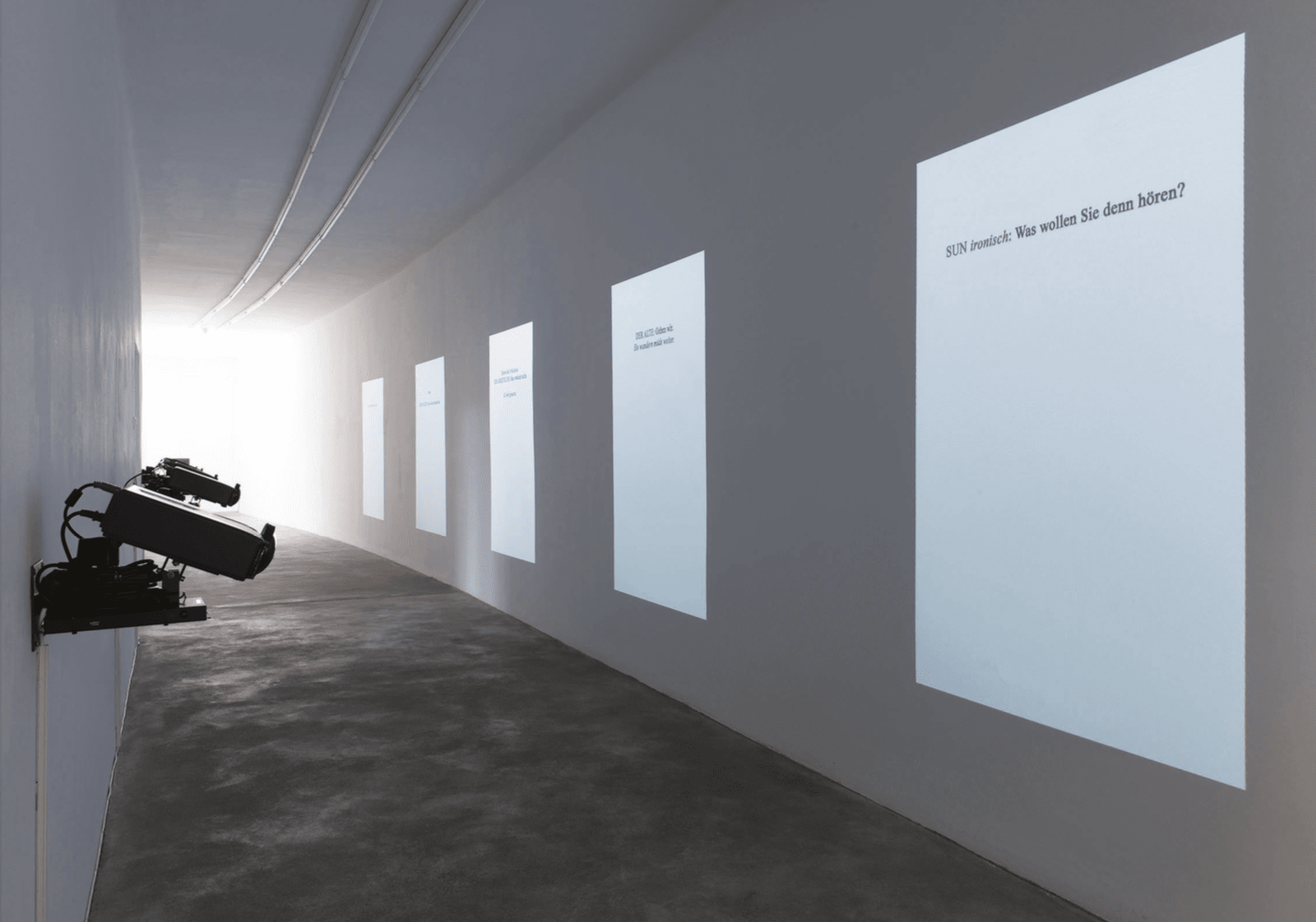
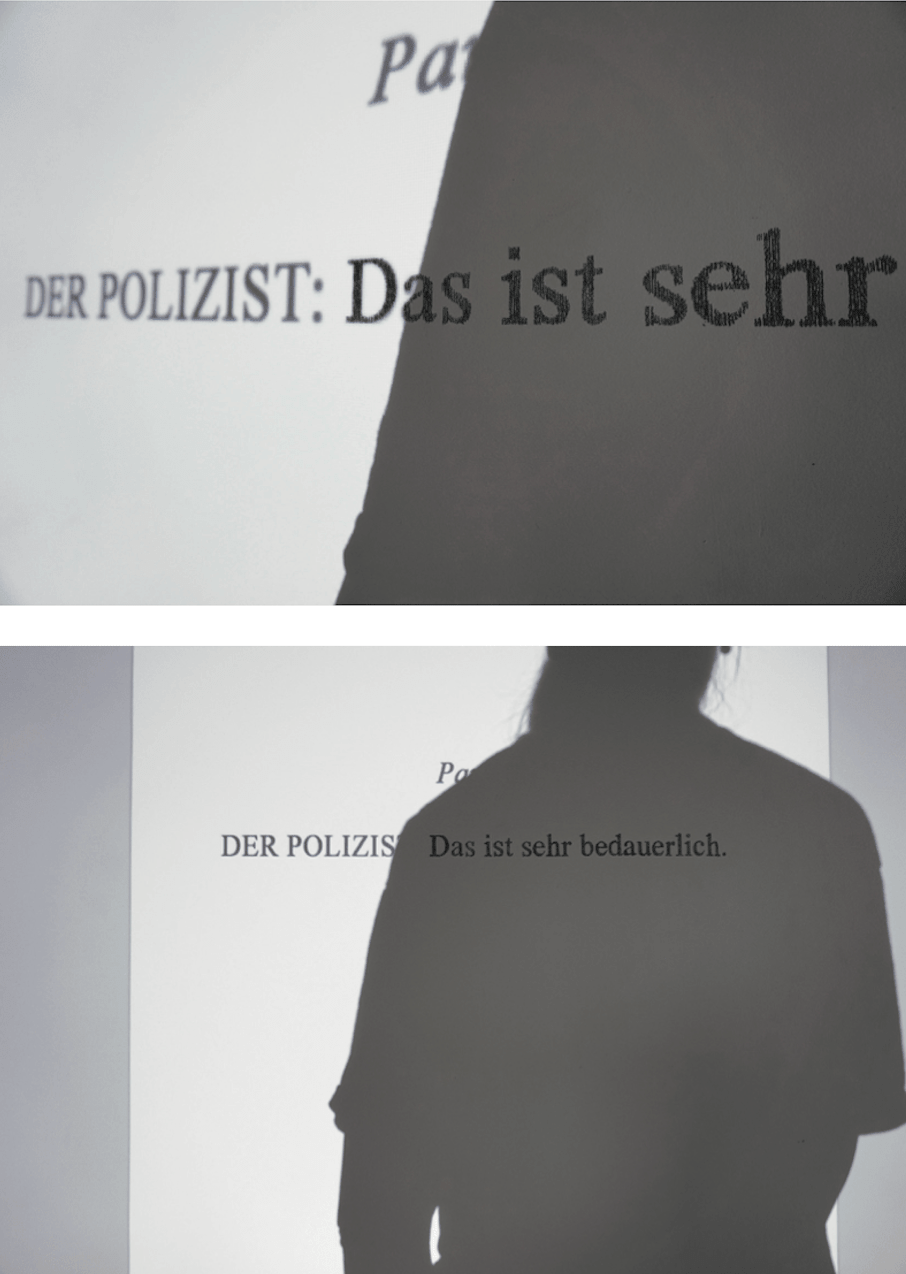
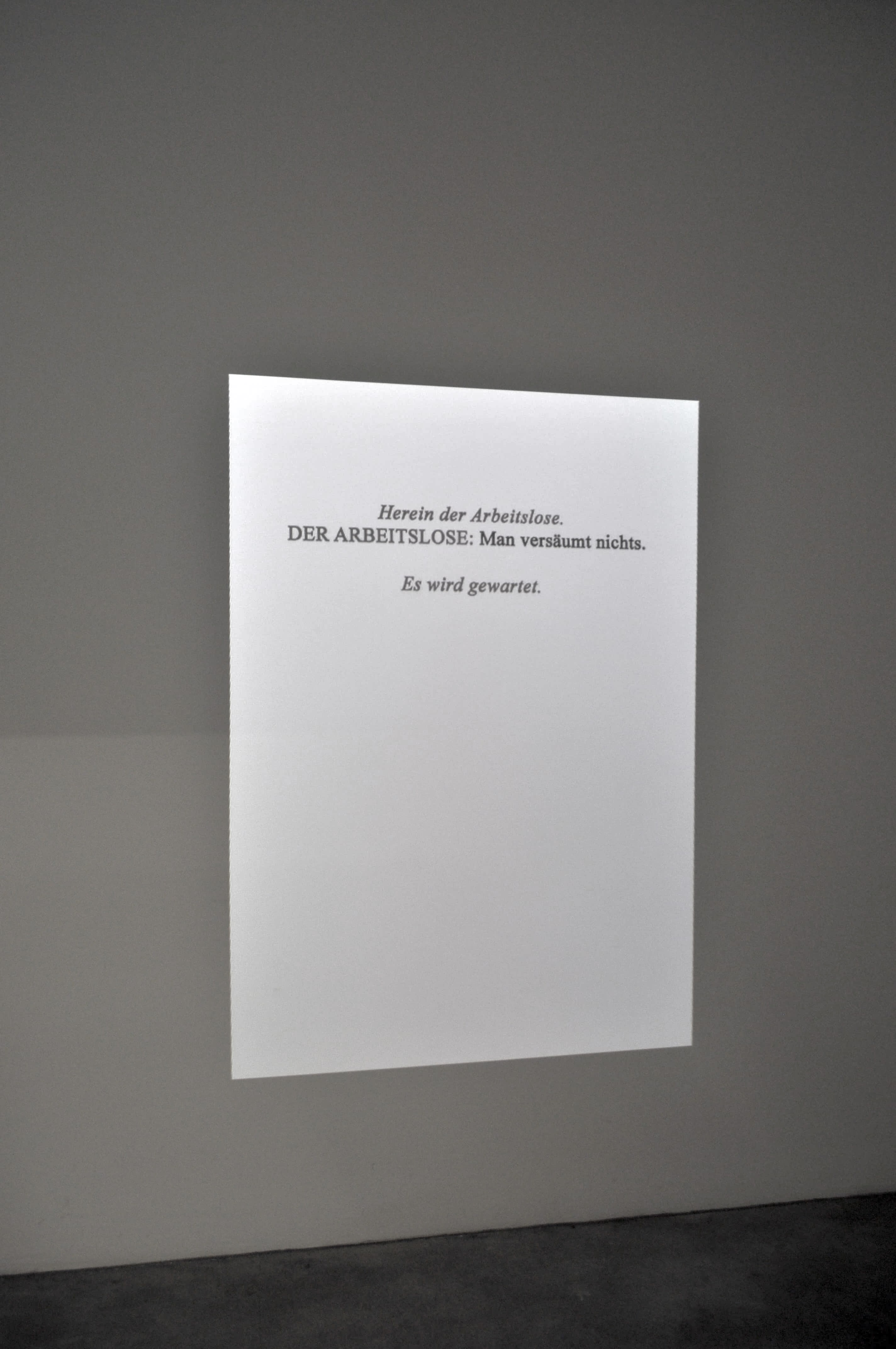
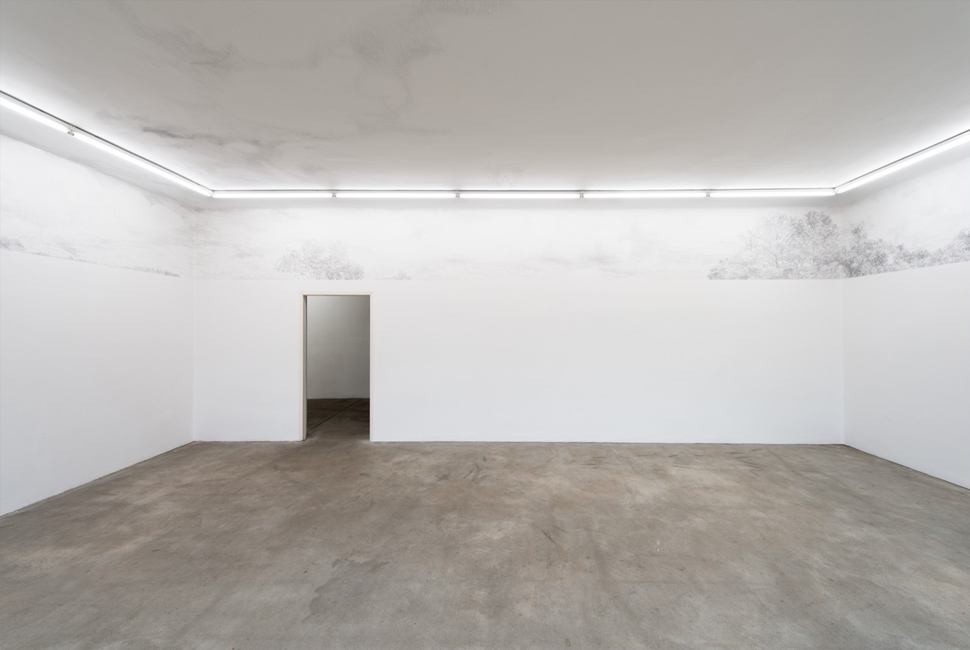 Incomplete, 2012
Incomplete, 2012
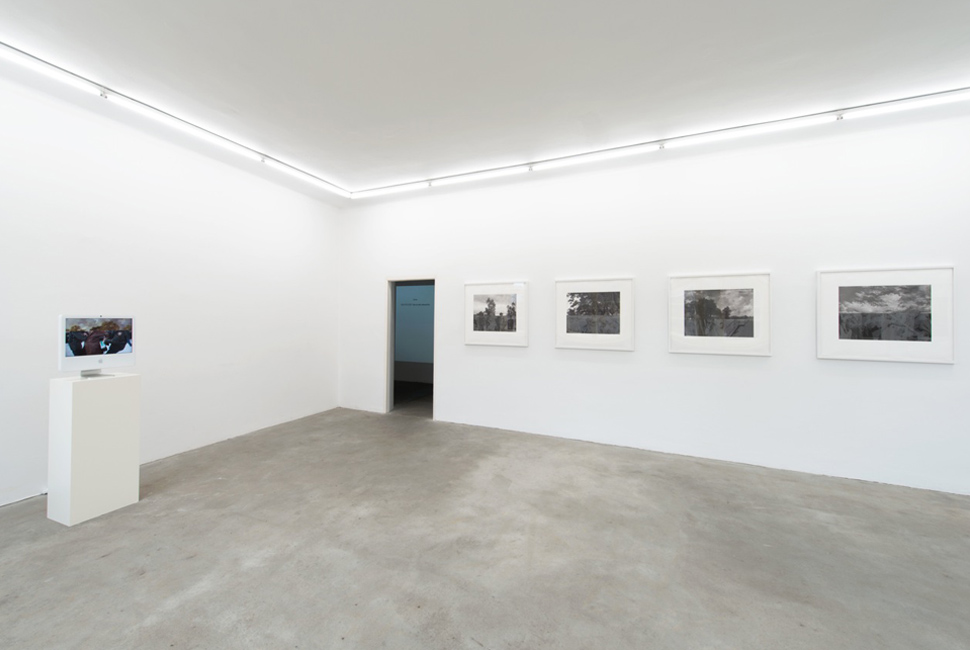
 Constructing the new landscape, 2012
Constructing the new landscape, 2012